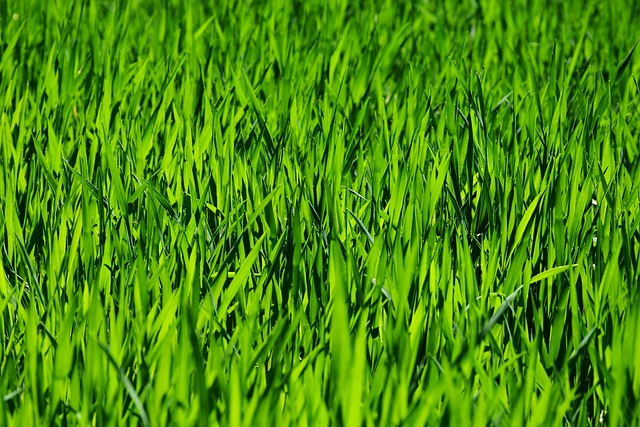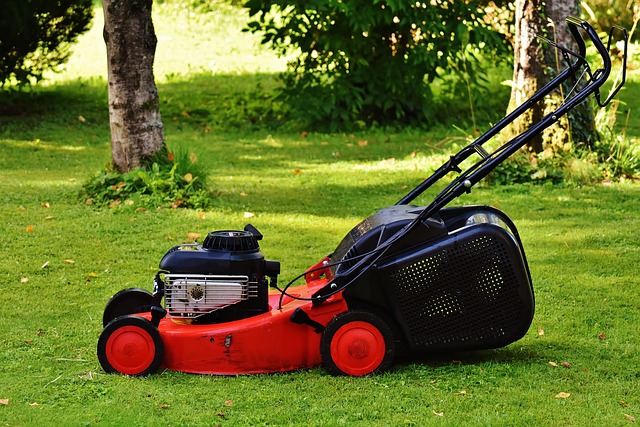Irrigating lawns effectively requires understanding grass types' water needs, soil composition, sun exposure, and regional climate. The right irrigation system—sprinkler or drip—tailored to these factors optimizes water use, reduces waste, and promotes lush landscapes. Meticulous planning, including assessing property needs, preparing grounds, strategically positioning sprinklers, and programming control systems, ensures sustainable Lawn Care and Landscaping outcomes. Regular maintenance ensures long-term efficiency and healthy outdoor spaces.
“Elevate your lawn care game with a tailored irrigation system! This comprehensive guide navigates the process from understanding your turf’s unique water requirements to selecting the perfect system. We explore various types, from sprinkler systems to drip irrigation, ensuring optimal hydration for vibrant landscapes.
Learn the step-by-step installation process, covering everything from design and component choice to testing and maintenance tips. Master the art of efficient watering for lush, thriving lawns, transforming your outdoor space into a verdant oasis.”
- Understanding Your Lawn's Water Needs: A Foundation for Effective Irrigation System Installation
- Choosing the Right Irrigation System: Types and Components for Optimal Lawn Care and Landscaping
- Installation Process: Step-by-Step Guide to Setting Up an Efficient and Sustainable Irrigation System
Understanding Your Lawn's Water Needs: A Foundation for Effective Irrigation System Installation

Irrigating your lawn effectively is a balancing act that requires understanding your turf’s specific water requirements. Every grass type, from Kentucky Bluegrass to Zoysia, has different needs based on its growth patterns and tolerance levels. Moreover, factors like soil composition, sun exposure, and regional climate significantly influence how much water your lawn demands at various times of the year.
Proper lawn care and landscaping involve creating an irrigation system tailored to these nuances. This includes installing the right type of sprinkler heads suitable for your grass species and landscape design. Strategically placed drip irrigation can also enhance efficiency by directly delivering water to plant roots, minimizing evaporation and waste.
Choosing the Right Irrigation System: Types and Components for Optimal Lawn Care and Landscaping

When it comes to Lawn Care and Landscaping, choosing the right irrigation system is paramount. The optimal system depends on several factors, including your lawn’s size, soil type, and specific watering needs. There are primarily two types of irrigation systems: sprinkler systems and drip systems. Sprinkler systems, popular for their efficiency in covering large areas evenly, use a network of pipes buried underground or above ground to spray water onto the lawn. This method is ideal for quick hydration and can be easily adjusted to target problem areas.
Drip systems, on the other hand, deliver water directly to the roots through a series of tubes placed near plants or trees. They are highly efficient as they minimize water waste by applying it precisely where it’s needed, making them excellent for Lawn Care and Landscaping in regions with water scarcity or specific plant requirements. Both systems have components like controllers (for scheduling and managing watering times), valves (to control the flow of water), and nozzles/emitters (for actual water distribution). Incorporating these elements strategically ensures optimal moisture levels, promotes lush growth, and contributes to the overall aesthetic appeal of your landscape.
Installation Process: Step-by-Step Guide to Setting Up an Efficient and Sustainable Irrigation System

Setting up an efficient and sustainable irrigation system involves careful planning and precise execution. Here’s a step-by-step guide to help you navigate the process, ensuring optimal lawn care and landscaping outcomes. Begin by assessing your property’s unique needs, considering factors like climate, soil type, and plant variety. This initial evaluation guides your decision on sprinkler types, placement, and water distribution. Next, prepare the grounds by clearing any debris or obstructions that might hinder water flow. Install a solid foundation for your irrigation system, incorporating suitable pipes and valves to ensure efficient water delivery.
Proceed with careful placement of sprinklers, strategically positioning them close to plant bases while avoiding waste through overspray. Connect each sprinkler to the main pipeline, ensuring secure fittings to prevent leaks. Program the control system according to your plants’ specific watering requirements, incorporating weather-based adjustments for optimal efficiency. Regular maintenance is key; inspect for leaks or blockages, and adjust settings as needed. With proper care, your irrigation system will provide sustainable lawn care and landscaping solutions, fostering lush, vibrant outdoor spaces.
Irrigation system installation is a strategic investment in your lawn’s health and longevity. By understanding your lawn’s water needs, selecting the right system type, and following a meticulous installation process, you can achieve efficient water distribution, optimal plant growth, and significant savings on your water bills. Incorporating these steps ensures sustainable Lawn Care and Landscaping practices for years to come.
